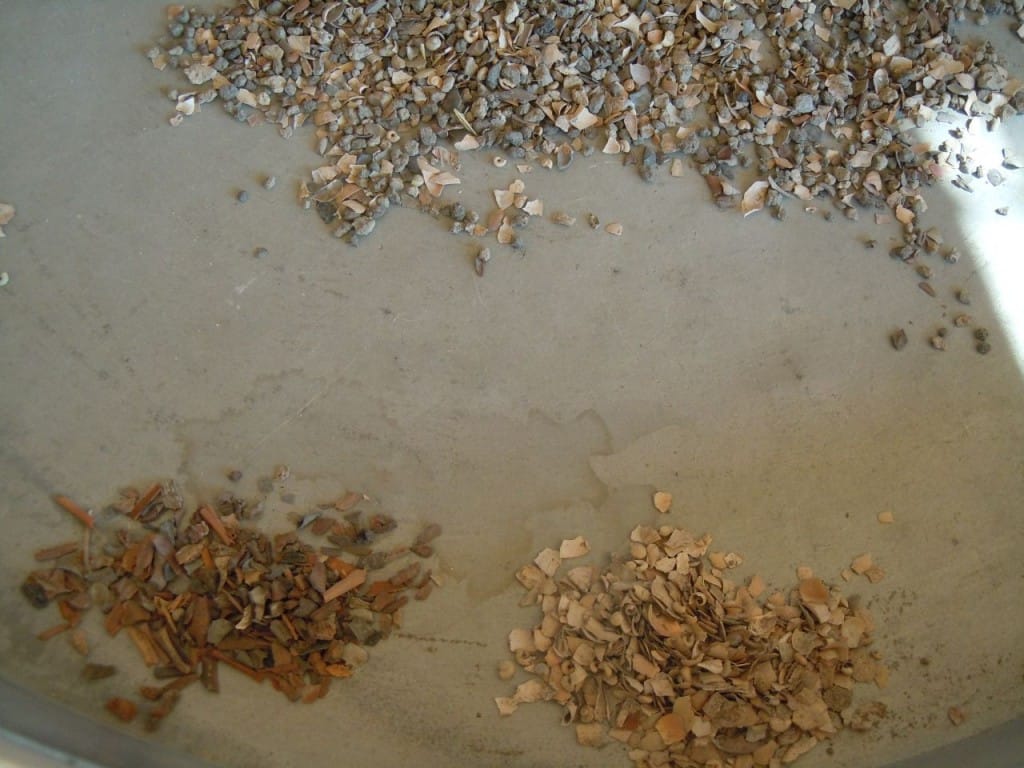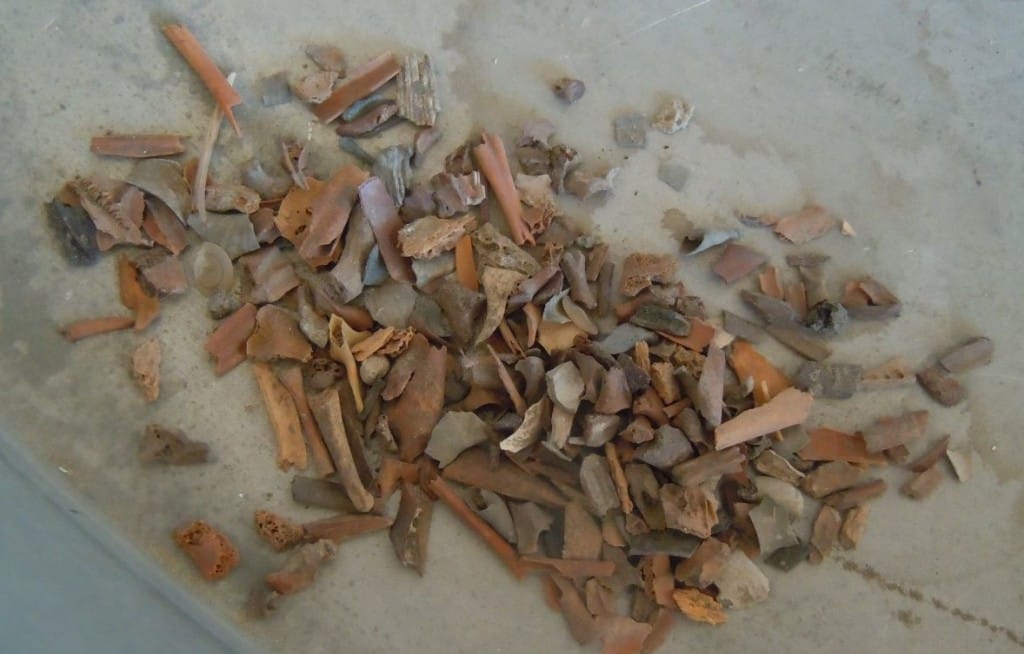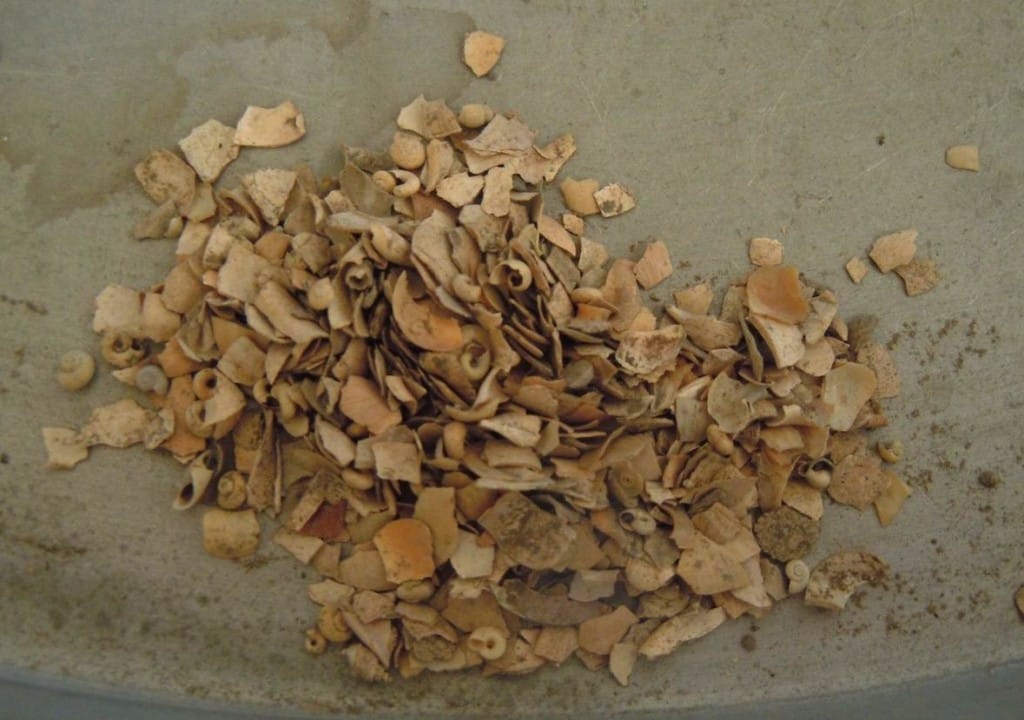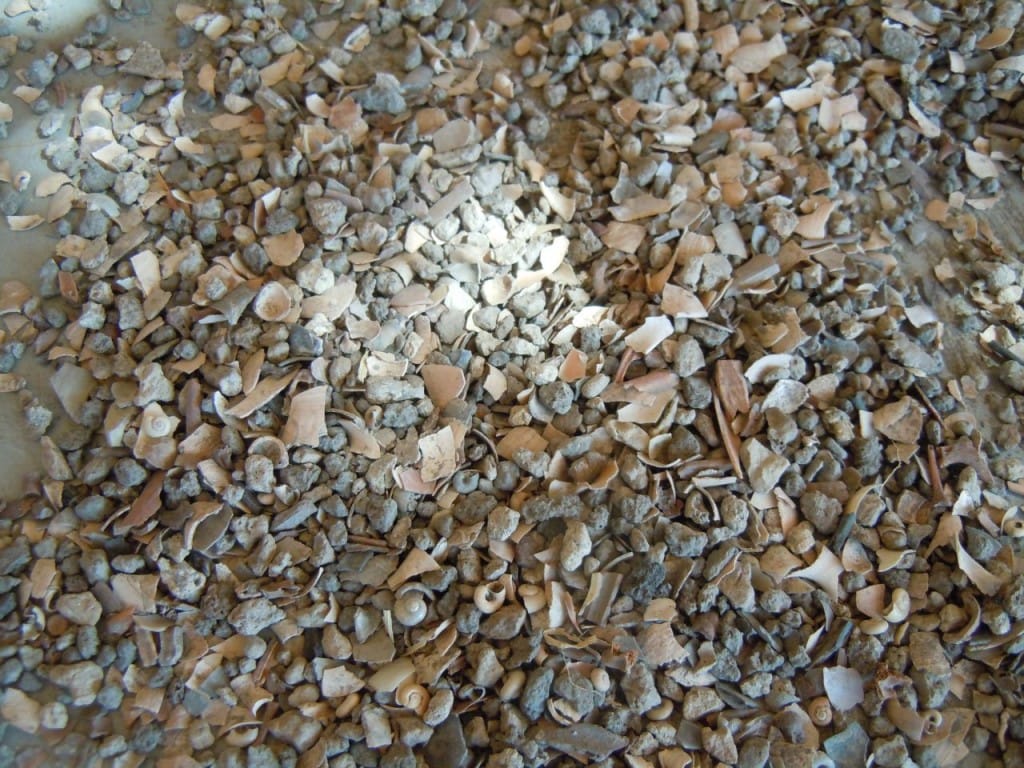In addition to our post about Ingrid Inversen, who analyses our Heavy Residue and mircoarchaeology’ we thought to dedicate a post to the sorts of material that we find in this meticulous process. The importance of Heavy Residue analysis has already been mentioned. We particularly benefit from sorting and analysis on site during the season.

While many of the artefacts below could be collected in the trenches by our excavators, many of the objects could be missed due to their small size and the fine-silty alluvial soil. Whilst all these finds could be hand collected on site, we clearly would not retrieve a representation sample, thereby creating a bias in our interpretation. This is especially important with microliths, microfauna and of course our plant remains.

Once the contexts have been either floated or wet sieved, a range of material is extracted. The predominant element consists of bone, both human and animal. Faunal remains are important as they provide information about environment, food production and consumption. These bones are vital to our understanding of Boncuklu because the smallest bones – amphibians, birds, reptiles and other small mammals – would otherwise be invisible and missed in our analysis. Fish, in particular, are important as they are a good indicator of wetland environment and exploitation. Without retrieval of fish we would not truly understand the diet of the Boncuklu community.
The next biggest body of material recovered is chipped stone. The use of microliths and small tools is common at Boncuklu and without this analysis we would not have a clear understanding of chipped stone production or onsite activities.
 A significant amount of mollusc shell is also found during Heavy Residue sorting. Most molluscs are local indicating the environment around the site. A few are sea shells imported mostly from the Mediterranean and the Black Sea and used as beads. This indicates not only extensive trading networks, but also implies interaction with neighbouring communities. Their use in personal adornment is also important for understanding social expressions of identity.
A significant amount of mollusc shell is also found during Heavy Residue sorting. Most molluscs are local indicating the environment around the site. A few are sea shells imported mostly from the Mediterranean and the Black Sea and used as beads. This indicates not only extensive trading networks, but also implies interaction with neighbouring communities. Their use in personal adornment is also important for understanding social expressions of identity.
Due to the chemical makeup of eggshells, avian shell remains are very well preserved in the archaeological record. These tiny fragments are often difficult to spot during excavation and are mainly collected during Heavy Residue sorting. The use of eggshell in archaeological analysis is important to help determine the human diet and ecology of the period. Determining the species of bird via the remaining shell pieces is a complicated process.
 Charcoal is not only for C14 dating. Larger pieces can be used to determine the types of trees within the environment. Wood was used in the construction of buildings and structures as well use in other tools and furniture. The charcoal remains can come from collapse of structures. These charcoal fragments may be quite significant due to the lack of trees in this Neolithic environment. The sorted charcoal is then sent to the archaeobotanists for analysis.
Charcoal is not only for C14 dating. Larger pieces can be used to determine the types of trees within the environment. Wood was used in the construction of buildings and structures as well use in other tools and furniture. The charcoal remains can come from collapse of structures. These charcoal fragments may be quite significant due to the lack of trees in this Neolithic environment. The sorted charcoal is then sent to the archaeobotanists for analysis.
Also found during the Heavy Residue process is a species of plant called Hackberry, the pits of very small fruit. Found in many archaeological sites these fruits were processed rather than eaten raw. A natural sweetener, hackberries may have been ground into a paste and dried before being added to foodstuffs.
The silty fine soil can hide very small finds such as stone beads. Occasionally these beads find their way into Heavy Residue, a pleasant surprise for the sorters.

Heavy Residue processing can take a significant period of time, but the analysis of the results is integral to the overall insights about the site. It is through this evidence that we understand the behaviour of past human populations and the environment.
For more on Flotation and Wet Sieving in the field head to:
http://palaeoworks.anu.edu.au/paltr04.pdf




 Follow
Follow